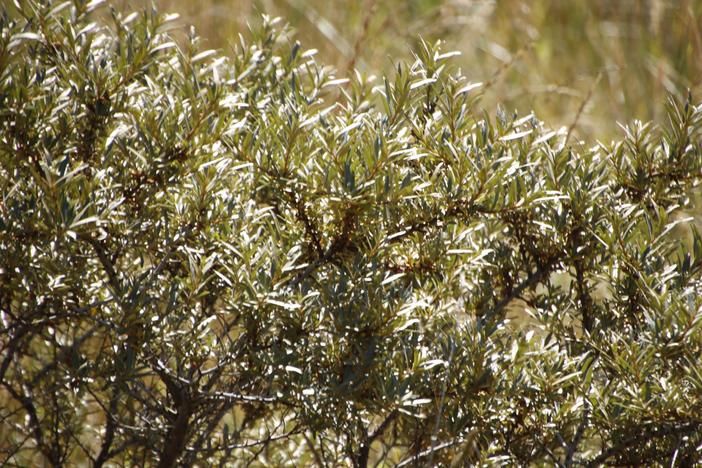Sea Buckthorn
(Elaeagnus rhamnoides)
Sea Buckthorn (Elaeagnus rhamnoides)
/
/

Tony Rebelo
CC BY-SA 4.0





Estimated Native Range
Summary
Sea Buckthorn is valued for its hardiness and ability to thrive in poor soils, making it useful for soil stabilization and reclamation projects. Its berries are harvested for nutritional supplements, juices, and cosmetics. In gardens, it can be used for hedges or as an ornamental plant, especially attractive for its berries. It requires full sun and tolerates a range of soil types, provided they have good drainage. While it is drought-tolerant, it benefits from occasional watering during prolonged dry spells. There are no major disease problems, but it can be susceptible to pests like aphids. It is important to plant both male and female specimens if berry production is desired.CC BY-SA 4.0
Plant Description
- Plant Type: Shrub
- Height: 8-12 feet
- Width: 8-12 feet
- Growth Rate: Rapid
- Flower Color: N/A
- Flowering Season: Spring
- Leaf Retention: Deciduous
Growth Requirements
- Sun: Full Sun
- Water: Low
- Drainage: Medium, Fast
Common Uses
Bird Garden, Butterfly Garden, Deer Resistant, Edible*Disclaimer: Easyscape's listed plant edibility is for informational use. Always verify the safety and proper identification of any plant before consumption., Erosion Control, Low Maintenance, Street Planting
Natural Habitat
Dunes and coastal cliffs, riverbanks, and open woodlands across Europe and Central Asia
Other Names
Common Names: Seaberry, Sanddorn
Scientific Names: , Elaeagnus rhamnoides, Hippophae rhamnoides subsp. rhamnoides, Rhamnoides hippophae, Hippophae rhamnoides subsp. maritima, Hippophaes rhamnoideum, Argussiera rhamnoides, Hippophae angustifolia, Hippophae littoralis, Hippophae rhamnoides subsp. pamiroalaica
GBIF Accepted Name: Hippophae rhamnoides subsp. rhamnoides